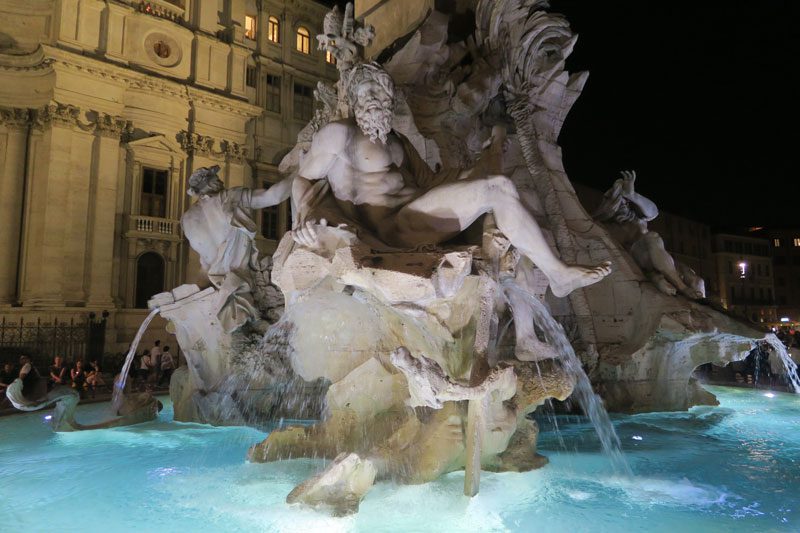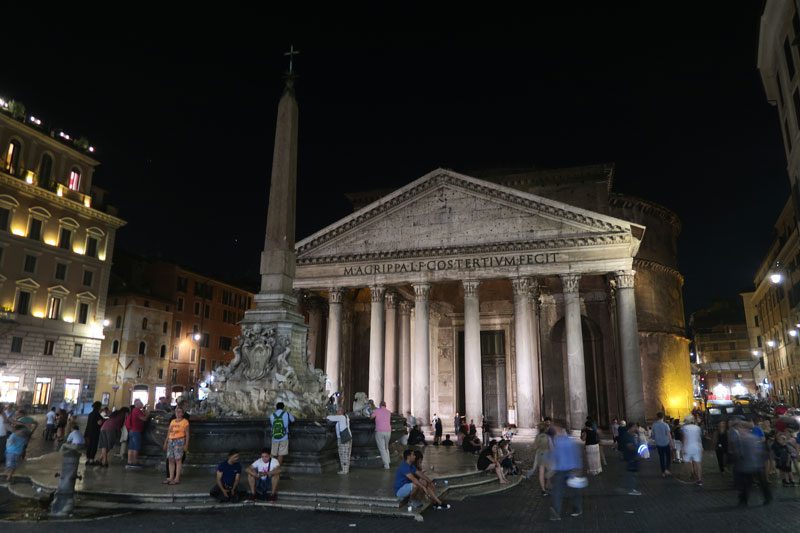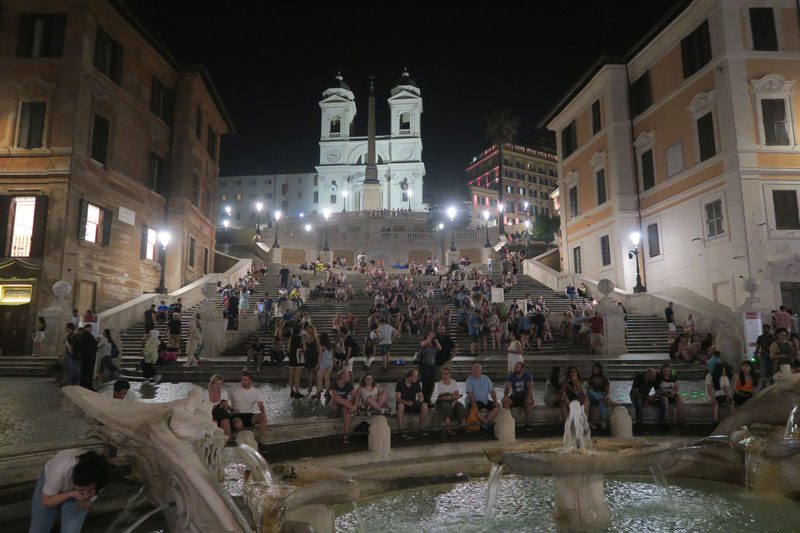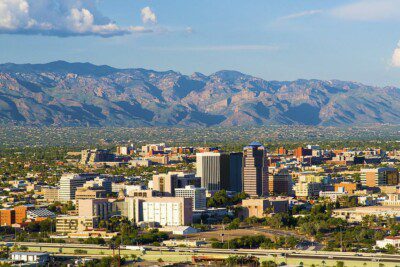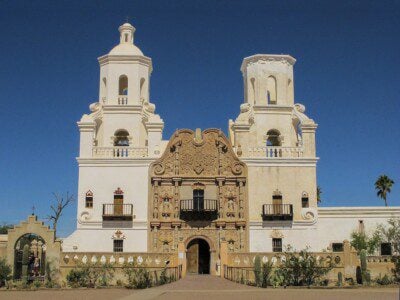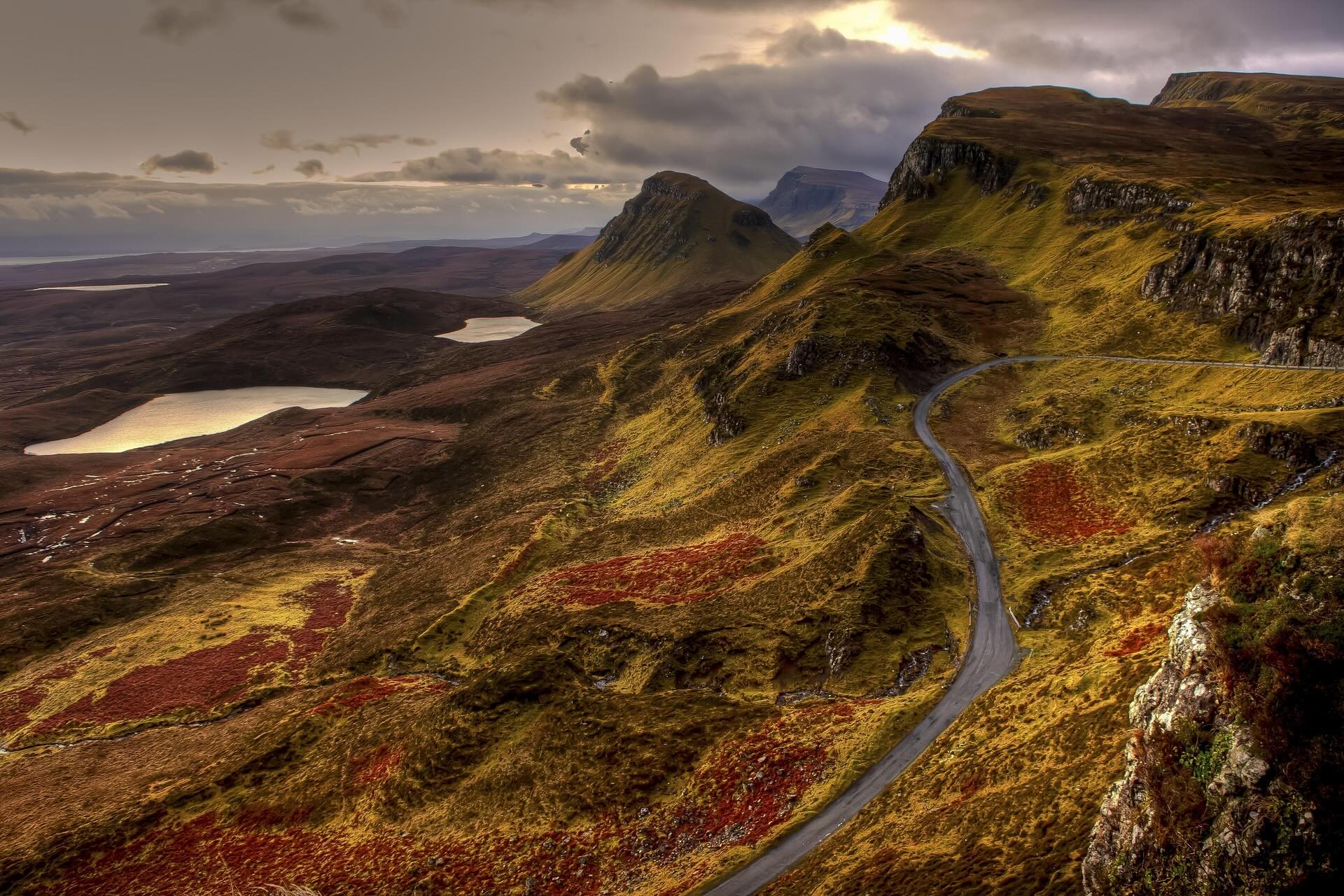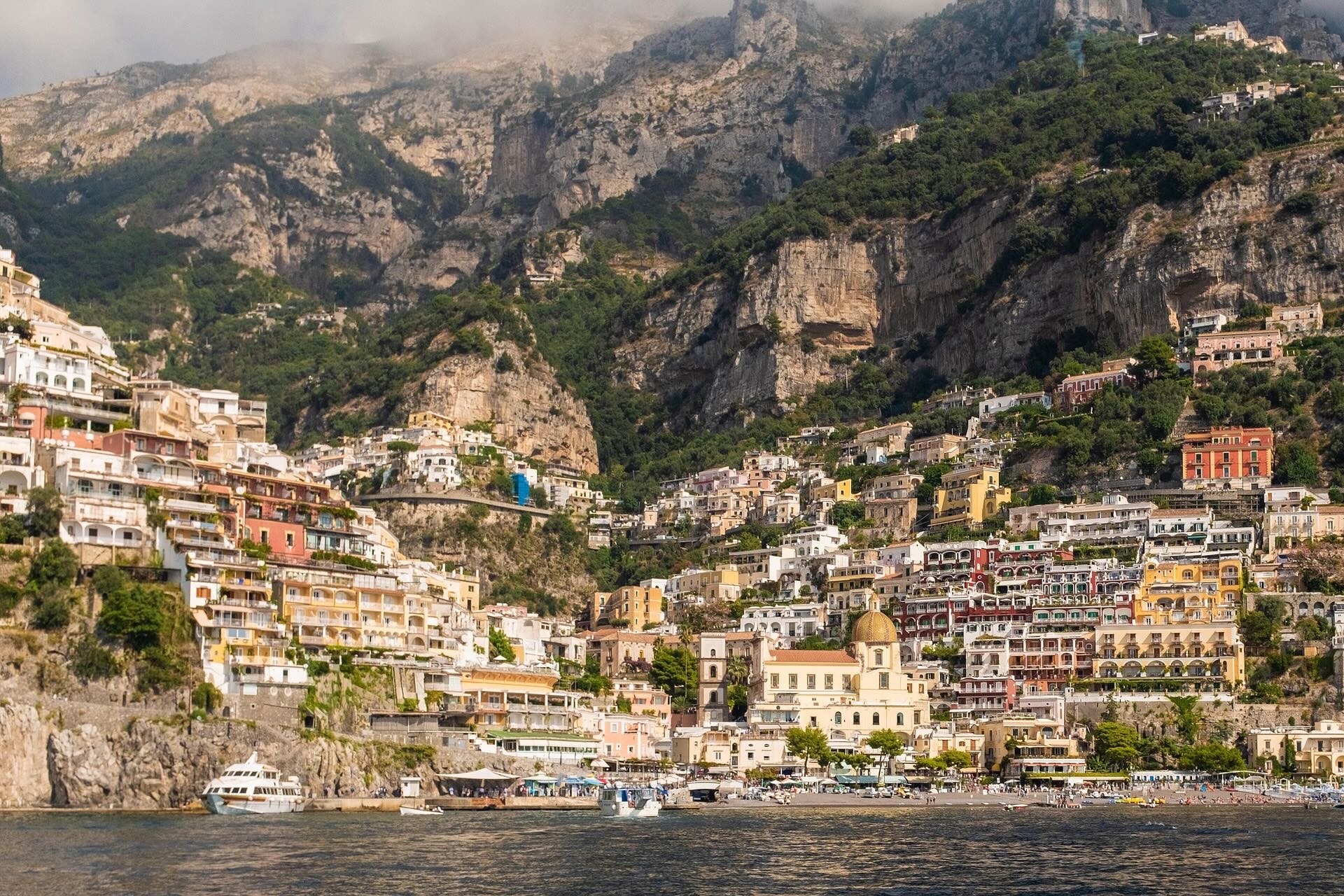5 Days In Rome
Day 3: Historic Center, Via del Corso & Around
The third day of our 5 days in Rome itinerary is devoted to the historic center and Tridente district, both for sightseeing and for some shopping. It would be another full day of walking but you can lighten the load doing the return leg using public transportation or a taxi. We’ll reach as far as Piazza del Popolo and Villa Borghese, covering many of Rome’s most famous sites along the way.
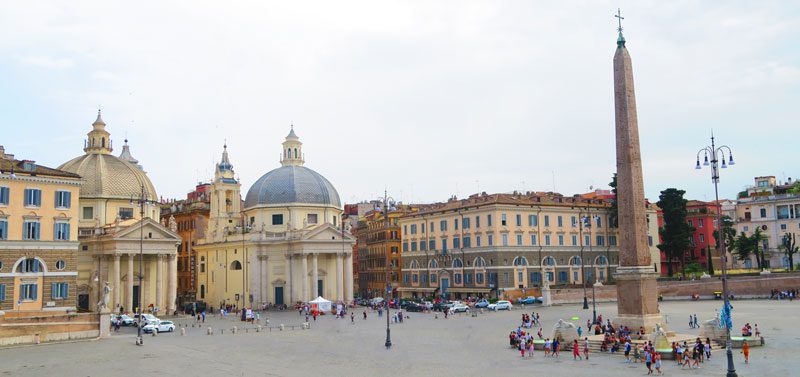
We wanted to start the day at the Pantheon and even got there before the opening (8:30 am or 9 am on Sunday). However, there was already a huge queue of people and groups waiting to enter. I recommend visiting in the late afternoon, just before closing time (7:30 pm or 6 pm on Sunday).

Coffee in a Classic Rome Cafe
They say that when in Rome, do as the Romans do but it’s also perfectly OK (sometimes) that when you’re a tourist in Rome, do as the tourists do. This is why we started the day at Sant’ Eustachio Il Caffè, probably the most famous cafe in Rome. It is here that the home-roasted beans are said to be blended with water from an ancient aqueduct. Perhaps this explains the steep prices (1.50€ extra if you’re sitting outside) but nonetheless, you simply must try the granita con panna!

For a similar (and slightly cheaper) experience, head to La Casa Del Caffè Tazza D’oro. Its large and classic interior gives you the feeling that coffee has been drunk here for at least a century and their version of the granita is out of this world.

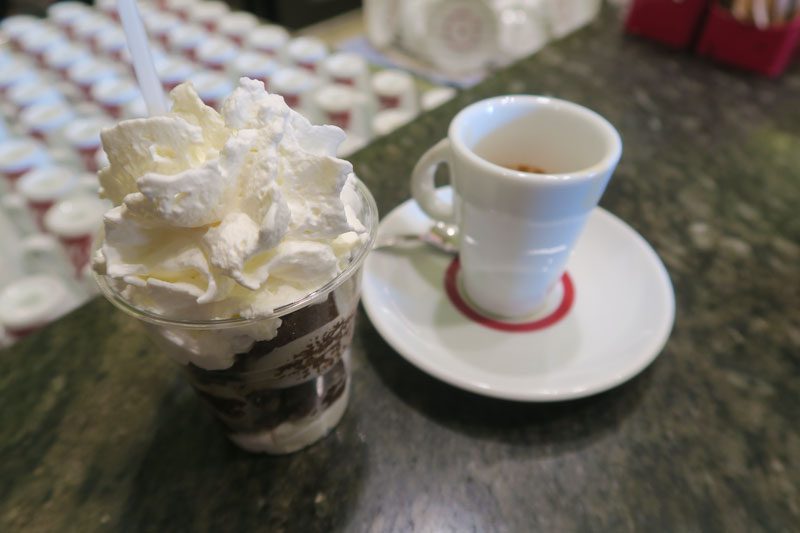
Both cafes offer roasted beans and Nespresso-compatible capsules for purchase.
Sant’Ivo alla Sapienza
Since it was a Sunday morning, we visited this interesting church which is only open to the public on Sunday mornings. Built during the mid 17th century by Italian architect Francesco Borromini, the church is widely regarded as a masterpiece of Roman Baroque architecture. The church you enter into nowadays used to be the chapel of a university. Its interior is dominated by Borromini’s rotunda, an absolute beauty though devoid of any lavish frescoes.
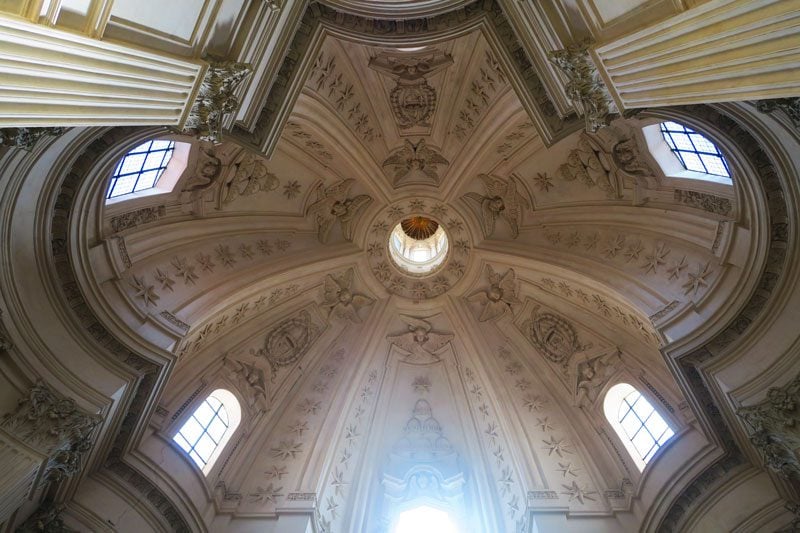
Basilica di Santa Maria Sopra Minerva
Built in the 13th century, this is the only Gothic church in Rome and a real treasure trove in terms of religious art. Of the basilica’s many highlights, be sure to check out Michaelangelo’s marble sculpture of Christ bearing the cross and the exquisite fresco depicting the Assumption. At the altar, check out the exposed tomb of Saint Catherine of Siena.
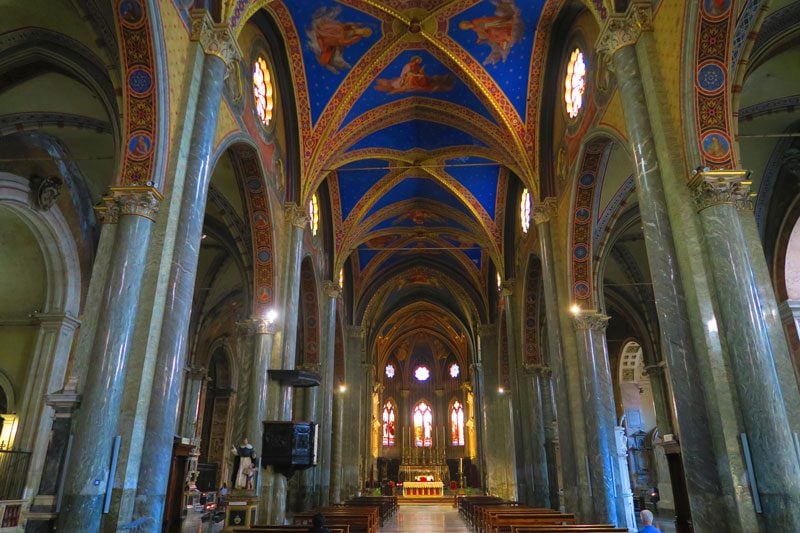


Just outside the basilica, and for those who have already had enough of my church visits, check out Bernini’s famous 17th-century elephant statue carrying the weight of an ancient Egyptian obelisk, one of 13 obelisks decorating the Eternal City’s piazzas.

Sant’ Ignazio di Loyola
Pretty much adjacent to Santa Maria Sopra Minerva, the cathedral of Sant’Ignazio is dedicated to the Jesuit founder Ignatius of Loyola. It is a must-visit for its incredible fresco ceiling depicting St Ignatius on his way to heaven.
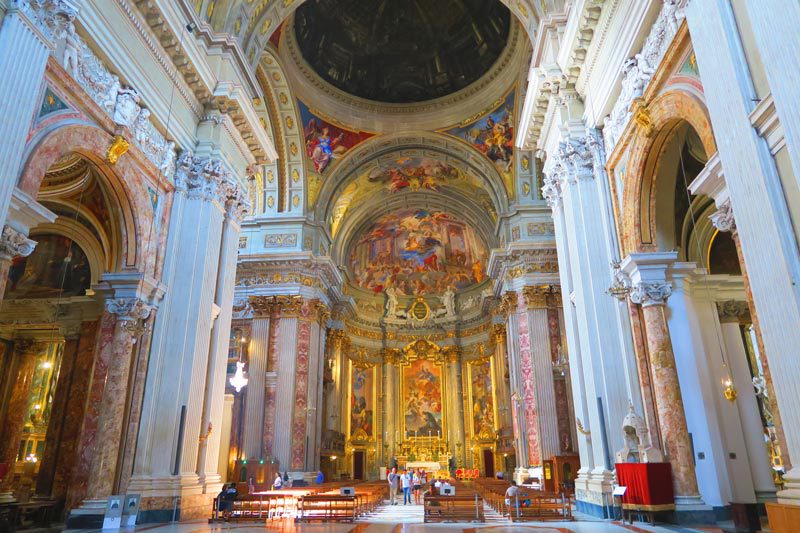
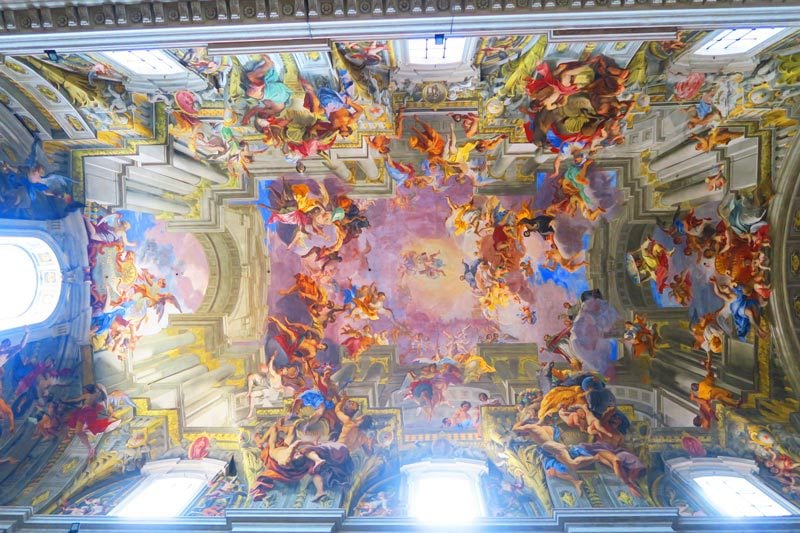
Doria Pamphilj Gallery
Yesterday in Trastevere, we visited Villa Farnesina and today, we’ll visit a Roman mansion in the center of town. At the very bottom of Via del Corso near the grand Piazza Venezia, Galleria Doria Pamphilj is another “off the beaten track” museum worth visiting for those who appreciate art yet are allergic to crowds. We spent about one hour here and were super glad to have visited (12€ museum entrance, no pre-booking necessary, free audio tour).
Built in the 17th century by the Doria Pamphilj family, the mansion was fashioned in Rococo style. The Doria Pamphilj family is one of Rome’s wealthiest clans and at the time, had close ties with the sitting Pope. The estate’s founding family member had a special love for arts and he commissioned work to cover every inch of available space in the palace. Today, it is considered as the finest collection of private art in Rome, with work by the likes of Bernini and Velasquez. The family still has a residence within the estate that can be visited for an extra charge.


The most stunning feature in the gallery is the grand hall, reminiscent of a miniature version of the grand foyer in the Palais Garnier of Paris. The natural and artificial lighting in the grand hall, coupled with the ceiling painting and the walled mirrors create an illusion of walking on gold.
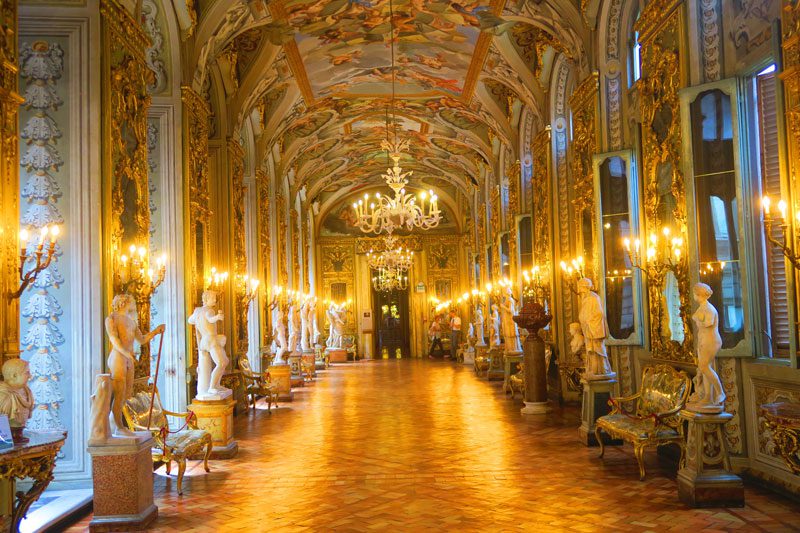
Via del Corso
From the Doria Pamphilj Gallery, begin the walk up Via del Corso to its grand termination at Piazza del Popolo. Via del Corso is one of Rome’s most popular shopping streets. In fact, over the weekend (at least when we visited during early June), its upper (and narrower) section is closed to motorized traffic. Via del Corso is the main artery in the Tridente district; as you’re walking towards Piazza del Popolo, to your left is the historical center and to your right are popular landmarks such as the Spanish Steps and the Trevi Fountain. The following paragraphs will highlight a few worthwhile stops on this route from Piazza Venezia to Piazza del Popolo on Via del Corso.
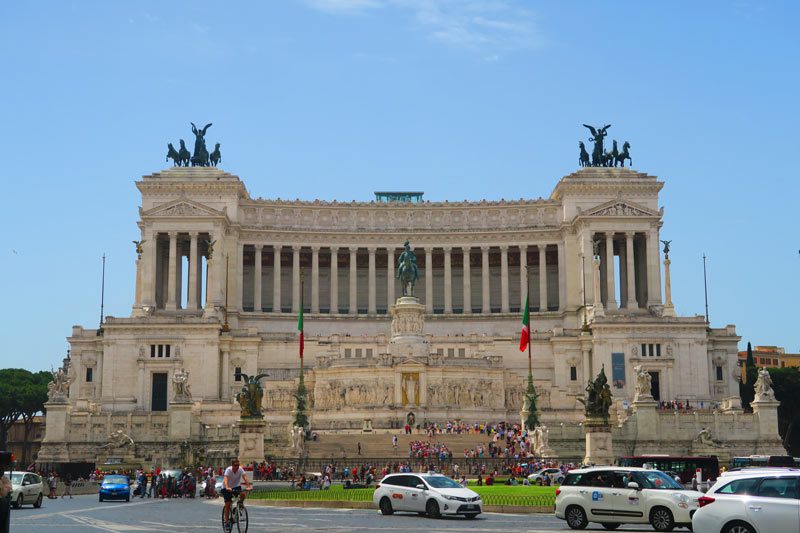

San Marcello al Corso
This church wasn’t on my radar but it turned out to be another beauty, mainly because of its extravagantly decorated ceiling. This particular church was built during the 16th century but it rests on the foundations of a much earlier religious structure that dates back to the 4th century. Apart from its ceiling, San Marcello’s other highlight is a 15th-century crucifix that miraculously survived a fire in 1519 which completely destroyed the church.
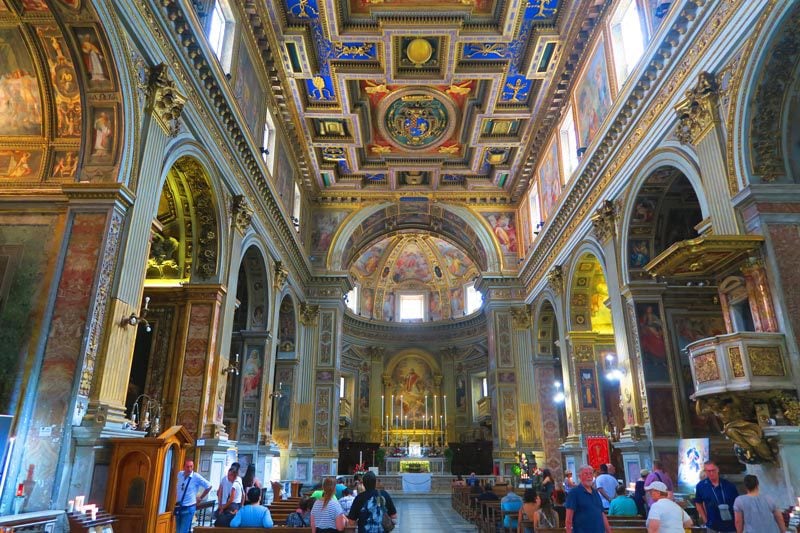
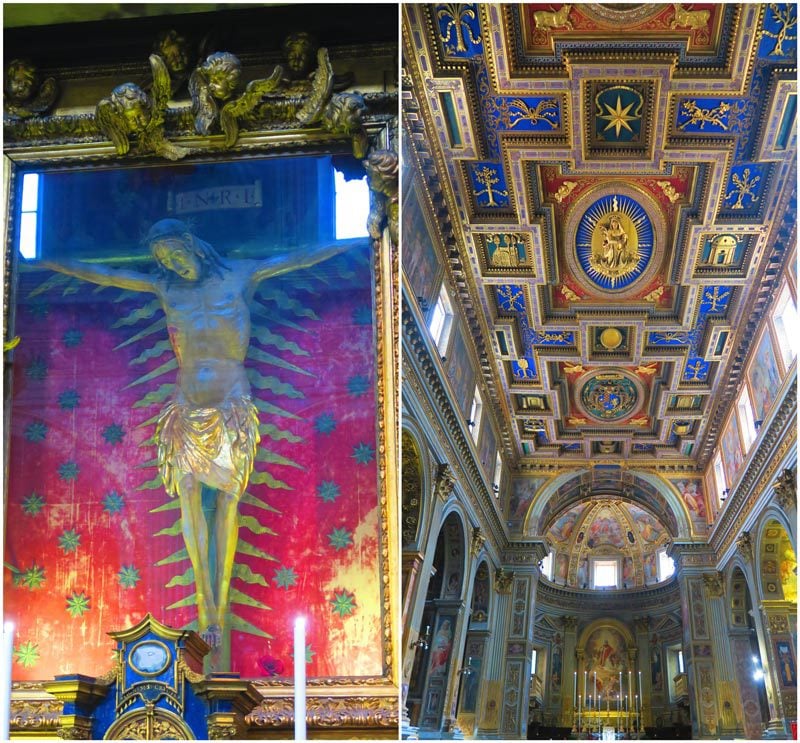
Piazza di Pietra
Ancient Rome enthusiasts will appreciate the short detour from Via del Corso to Piazza di Pietra which features 11 columns from the former Temple of Hadrian (dating back to the 2nd century AD).
Galleria Alberto Sordi
This isn’t another art gallery, but rather a shopping arcade built in Art Nouveau fashion. This sort of building can be found in most large Italian cities, such as Galleria Umberto I in Naples. Across the street is Piazza Colona, home to Italy’s prime minister and the Column of Marcus Aurelius which rises to a height of 40 meters and dates back to the late 2nd century AD. Be sure to inspect the column from a short distance to appreciate the depicted scenes carved into its surface.
Trevi Fountain
One cannot visit Rome without paying a visit to the Trevi Fountain. Yes, you will need to fight the crowds, selfie sticks and pickpockets (it’s horrible during the daytime), but the newly restored fountain is not to be missed. It’s hard to believe, but the Baroque-style grand fountain is actually built into one of the exterior walls of a Renaissance palace. The water gushing from its base of sculpted horses and god-like figures is sourced from one of Rome’s aqueducts that supply the city with pure drinking water.
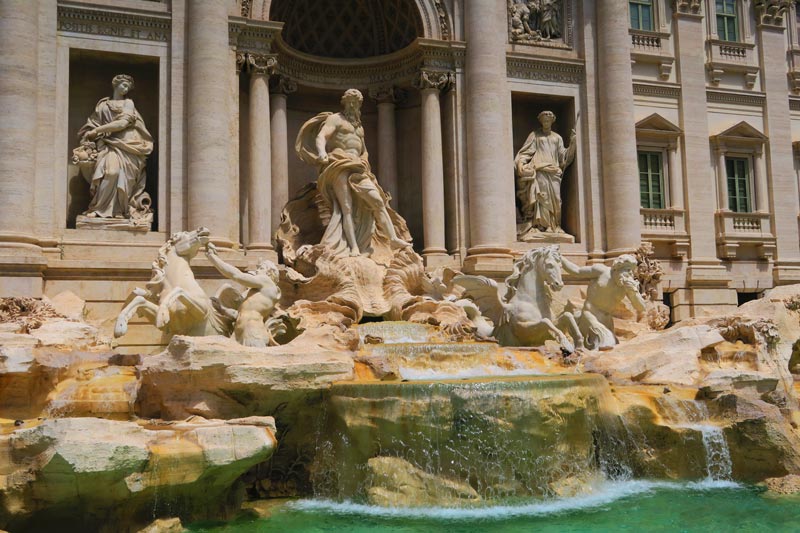
Apart from its undeniable grandeur, the Fontana di Trevi is best known for the touristy tradition of coin tossing, made famous by the 1954 film Three Coins in the Fountain. It is said that tossing one coin using your right hand over your left shoulder ensures your return to the Eternal City, two coins a romantic adventure with a Roman and three coins ensure progress from simply an affair with a local to an actual marriage…
Be careful with your personal belongings as the tight space is a perfect ground for pickpockets.
Via dei Condotti
Take Via dei Condotti to get from Via del Corso to the Spanish Steps. This short street is packed with high-end brands such as Louis Vitton and Tiffany and Co. You might not strike a bargain here but it’s a fitting way to approach another one of Rome’s most famous landmarks.
The Spanish Steps
Piazza di Spagna and the Spanish Steps are Roman landmarks that are not to be missed, though during the daytime, you certainly won’t be the only ones here. The Spanish Steps take their name from the Spanish Embassy that has stood here for centuries, but the 174 steps themselves were laid out in 1725 to connect the square with the church at the top.
Before climbing the steps and enjoying the views on the hilltop terrace or the overprices cafes on the adjacent mansions, check out the Bernini fountain that resembles a boat. At the top, savor the views and check out the Trinita dei Monti if you’re already here. It’s nothing special but, as I said, you’re already here…

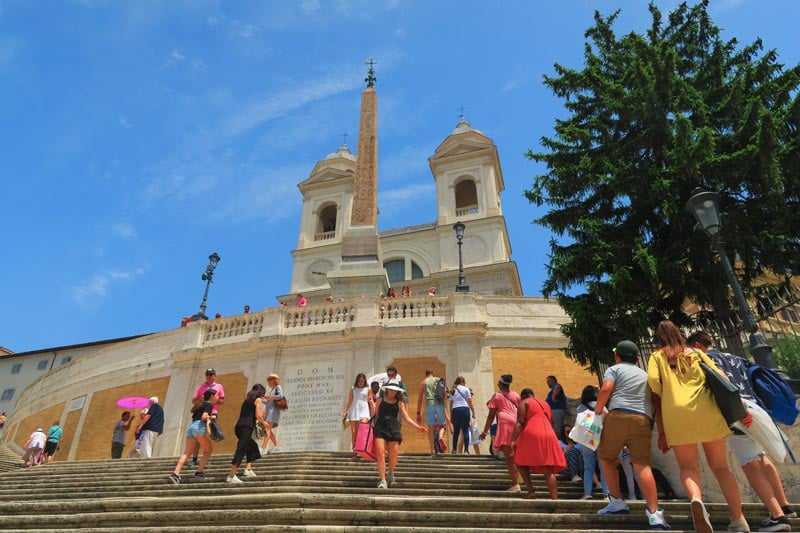

From the top of the Spanish Steps, you can take a shortcut straight to Villa Borghese Park on Viale della Trinità dei Monti or head to the “Catacombs of Rome” in the church of Santa Maria della Concezione dei Cappuccini. Other nearby grand churches include Chiesa di Santa Maria della Vittoria and Santa Maria degli Angeli e dei Martiri.
Basilica dei Santi Ambrogio e Carlo
This 17th-century basilica is on Via del Corso as you head towards Piazza del Popolo so you might as well pop in for a visit. The basilica is home to one of Rome’s largest domes and the fresco on its ceiling is well worth the slight neck pain.

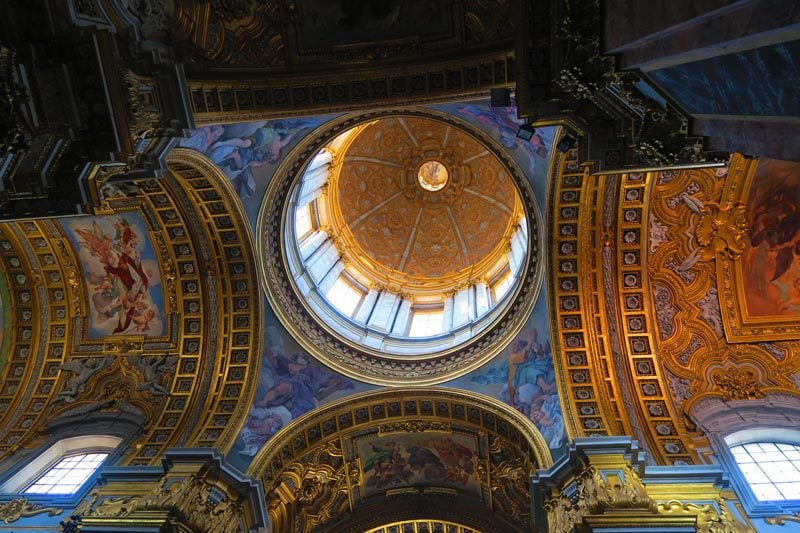
Piazza del Popolo
Via del Corso ends (or begins) at another one of Rome’s most iconic landmarks. Erected in the 17th century, Piazza del Popolo was designed as a grand entrance into Rome and you can still clearly see the remains of one the city wall gates.
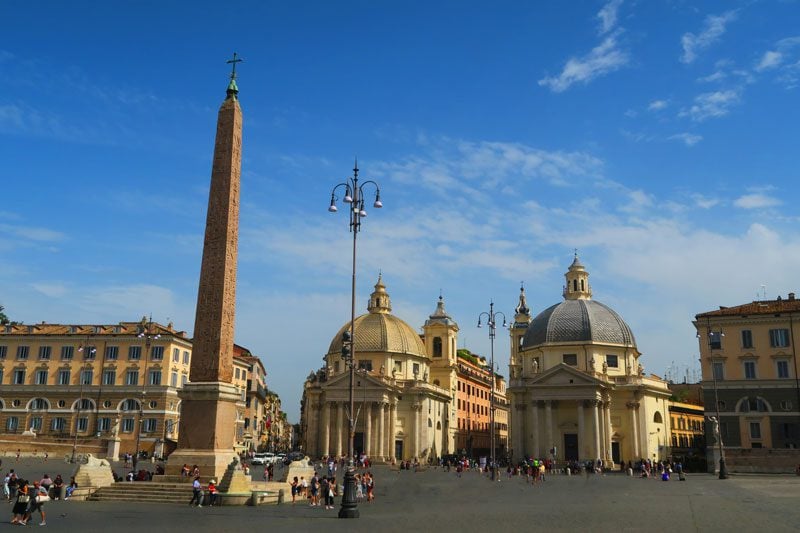
After walking up the congested Via del Corso, reaching this large square offers some relief, not to mention one of Rome’s many “money shots” as far as photography goes, thanks to the symmetrically laid twin churches and obelisk fountain through which Via del Corso runs all the way to Piazza Venezia.
Piazza del Popolo is linked to the Vatican via Via Cola di Rienzo which runs through the affluent Prati neighborhood.
Villa Borghese
From Piazza del Popolo, a staircase leads to Terrazza del Pincio which offers lovely panoramic views of the historic center and the Vatican. You are now in the Villa Borghese – Rome’s “Central Park”. In the past, the area marked where Rome ended and the countryside began. It was the chosen site for the Pope’s summer residence and mansions of the city’s elite families, one of which the current park takes its name after.
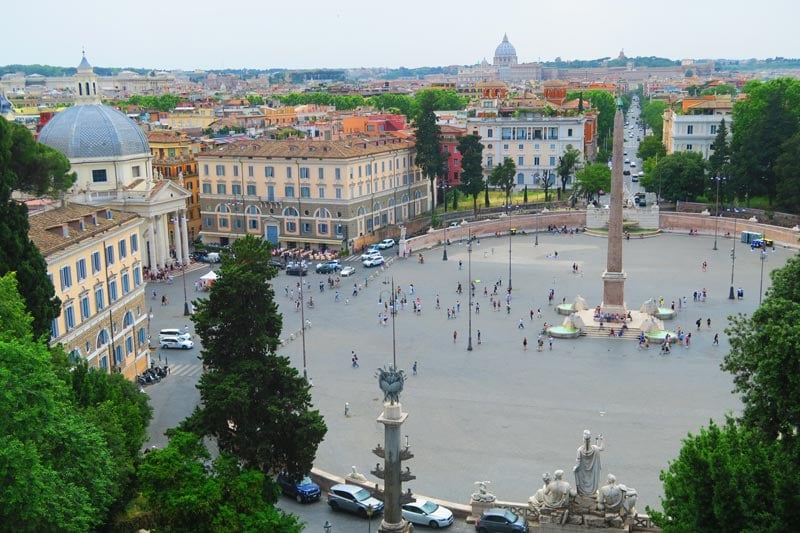
By far, the park’s most famous resident is the Galleria Borghese – one of the best museums in Rome. Focusing on painting and sculptures, it is strongly advised to purchase tickets in advance for Galleria Borghese and devote at the very least a couple of hours for exploration. We opted to skip this museum in favor of extra walking and shopping time, but if we had an extra half day in Rome, would have surely paid a visit.
Apart from the museum, the park features a zoo, gardens, and miles of trails that offer families with children a chance for some bonding on specially outfitted “family bikes”. During summer afternoons, the park comes to life with classical music performances.

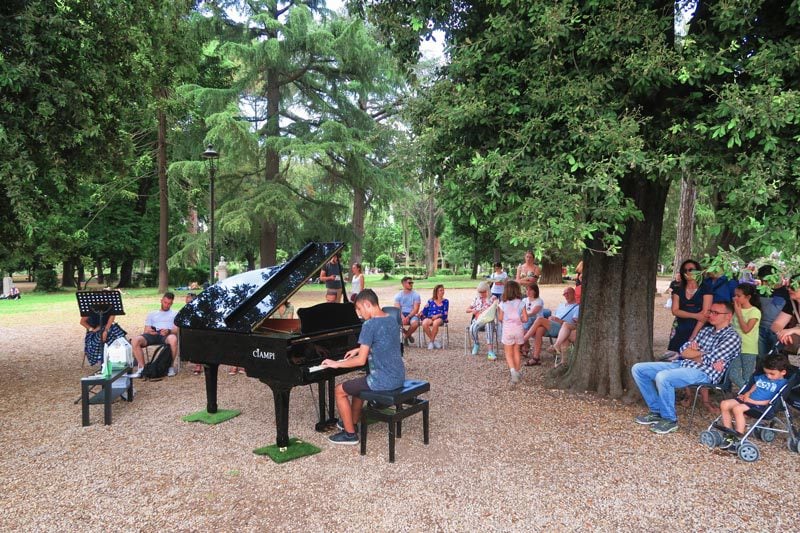
Instead of heading back to Piazza del Popolo, we headed to another panoramic lookout at Terrazza Viale del Belvedere and then continued to the top of Spanish Steps before heading down to Via del Corso to wrap things up.

The Pantheon
Originally planned as one of the first sightseeing stops of the day, Rome’s Pantheon was saved for last due to the long morning queues at its entrance. This was a great move as there was no waiting time at around 5:30 pm and its interior was only moderately congested.

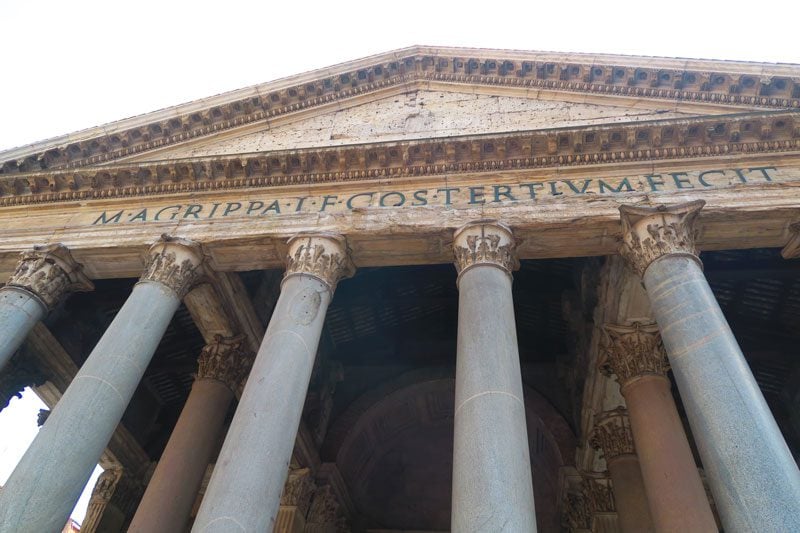
Free to enter (guided tours available), Rome’s Pantheon is not as impressive as the Pantheon of Paris, but its staggering age (1,900 years old!) adds many percentage points to its overall appeal. Entered via Piazza della Rotonda, the Pantheon is the city’s best-preserved structure from Ancient Roman times.
The name Pantheon means “temple of all the gods” and it was indeed built in the first century AD as a Roman pagan temple. In the following century, it was completed by the emperor Hadrian and has gone through several additional modifications over the years. Since the 7th century AD, the Pantheon has been used as a church, making it one of the oldest of its kind in Italy.
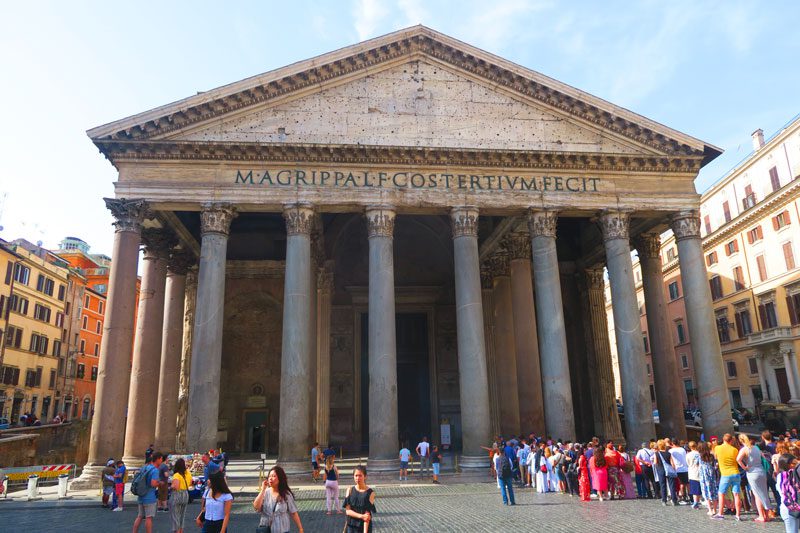
Viewed from the square, the Pantheon’s signature columns and Latin inscription are a must in any photographer’s frame, but it’s the interior that is simply mind-blowing. Inside, a massive unfinished dome with its signature oculus shadows the final resting ground of former Italian kings and one mega artist – Raphael – to name but a few.

It’s only once you’re inside that you realize the engineering marvel that is the Pantheon, built to its size in ancient times and without any precision tools. In case you’re wondering, water does rain to the Pantheon’s floors, but it is drained by 22 holes at its center.
Dinner at La Fiaschetta
Right under our noses at less than a three-minute walk from our hotel, we enjoyed one of our best dinners in Rome at La Fiaschetta. Hiding in a small alley, this restaurant offers a somewhat intimate dining experience in its interior and the staff is super friendly (and helpful). We dined on tomato bruschettas for starters and continued to main dishes of tuna steak with spicy tomato sauce and pasta. For dessert, tiramisu, of course. Reservations recommended.
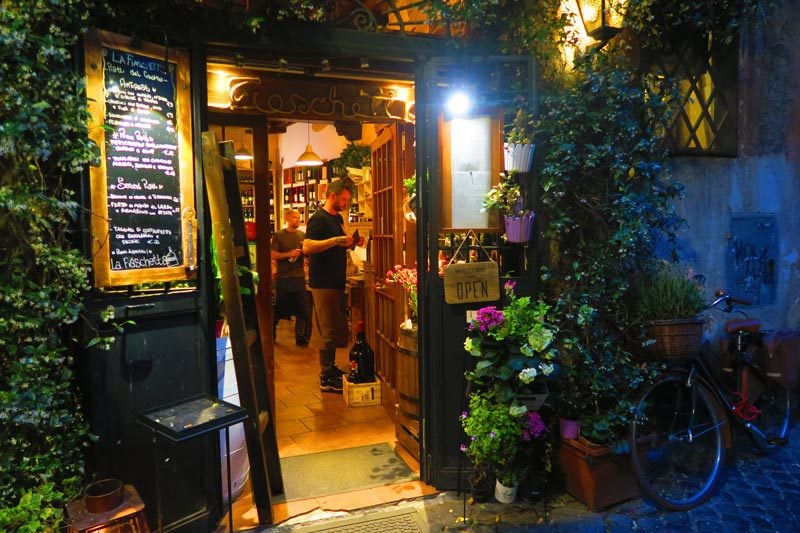
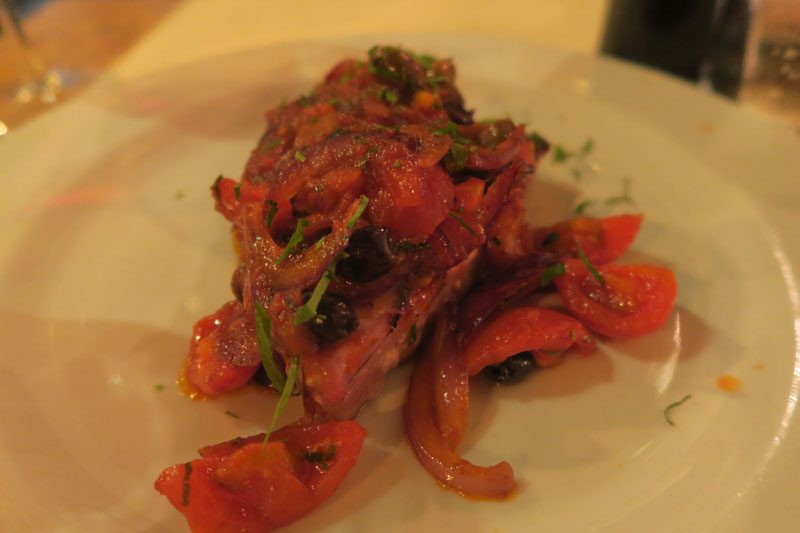
Rome by Night
Continuing with tradition, it’s hard to resist returning to the places you visited during the daytime after the sun has set. On this evening, we burned a fraction of the (well deserved) dinner calories, with an evening stroll to Piazza Navona, the Trevi Fountain, Spanish Steps and the Pantheon – all of which are much more pleasant and romantic monuments to visit by night.
